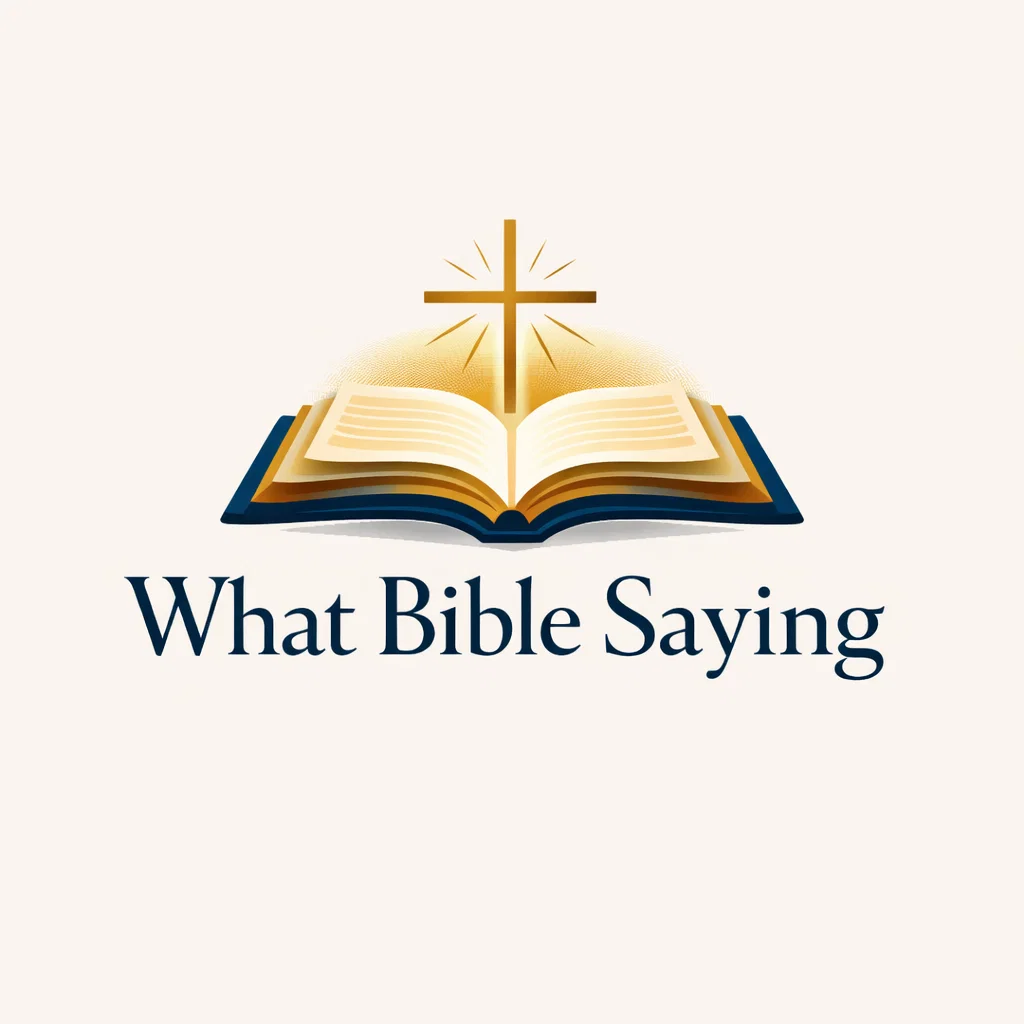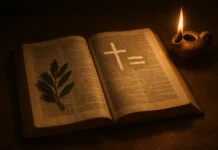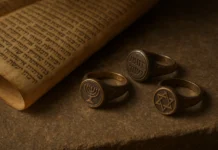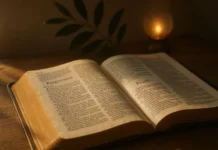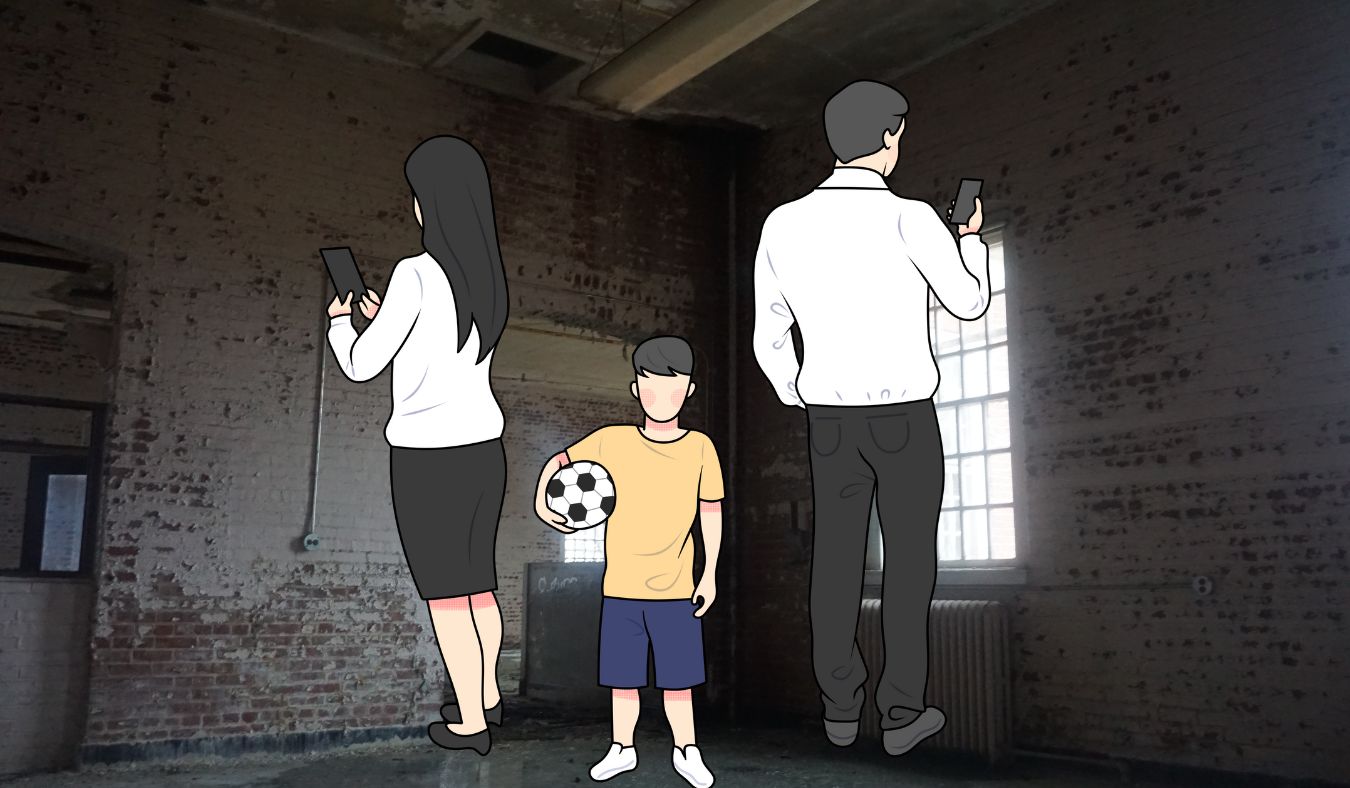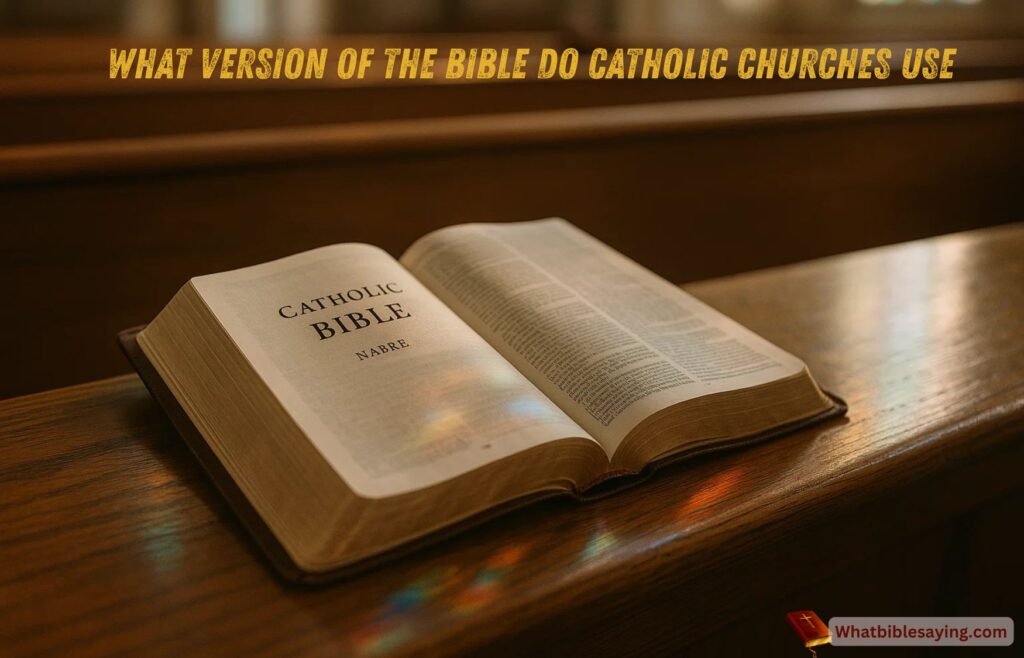 When you walk into a Catholic church and hear Scripture being read aloud, have you ever wondered, “Which Bible are they using?” It’s a good and honest question, especially if you’ve grown up hearing different versions like the King James or NIV in other churches or Bible studies. As someone who has spent years in ministry and worship, I’d love to walk with you through this important topic one that touches on tradition, trust, and truth.
When you walk into a Catholic church and hear Scripture being read aloud, have you ever wondered, “Which Bible are they using?” It’s a good and honest question, especially if you’ve grown up hearing different versions like the King James or NIV in other churches or Bible studies. As someone who has spent years in ministry and worship, I’d love to walk with you through this important topic one that touches on tradition, trust, and truth.
Let’s explore what version of the Bible Catholic churches use, and why it matters not only for Catholics but for anyone curious about the roots and rhythms of Christian faith.
Why Are There So Many Versions of the Bible?
Before we zero in on the Catholic Church, it helps to understand why we have different versions of the Bible in the first place.
The Bible wasn’t originally written in English. In fact:
- The Old Testament was mostly written in Hebrew and Aramaic.
- The New Testament was written in Greek.
Over the centuries, scholars translated these sacred texts into various languages to help people understand God’s Word in their native tongue. That’s why we have the King James Version (KJV), New International Version (NIV), New Revised Standard Version (NRSV), and many more.
Each version uses a slightly different approach:
- Formal equivalence (word-for-word)
- Dynamic equivalence (thought-for-thought)
- Paraphrase (e.g., The Message)
But the Catholic Church follows a very specific and deeply rooted tradition when it comes to its Bible version.
So, What Version of the Bible Do Catholic Churches Use?
The most common version used in Catholic churches today is the:
New American Bible (NAB)
More specifically, the updated version called:
New American Bible Revised Edition (NABRE)
This is the official English-language Bible used in most Catholic churches in the United States. It’s the version read during Mass, used in catechism classes, and recommended for personal study.
But here’s the beautiful part Catholicism around the world is vast and diverse. So in different countries, different approved versions may be used.
For example:
- In Canada, the NRSV-CE (New Revised Standard Version – Catholic Edition) is often used.
- In the UK, you might hear the Jerusalem Bible or its revision, the Revised New Jerusalem Bible.
- In the Philippines, the Christian Community Bible (Catholic Pastoral Edition) is commonly used.
No matter the version, these all have one thing in common: they are approved by the Catholic Church.
What Makes a Bible Version “Catholic”?
Here’s where things get interesting.
A Catholic Bible isn’t just any Bible it includes all the books that the Catholic Church recognizes as inspired by God. This includes:
✅ The 46 books of the Old Testament
✅ The 27 books of the New Testament
✅ That’s a total of 73 books
You might be thinking, “Wait… doesn’t the Protestant Bible have 66 books?”
Yes, and here’s why.
What’s the Difference Between Catholic and Protestant Bibles?
The difference lies in a set of books called the Deuterocanonical books. These include:
- Tobit
- Judith
- Wisdom
- Sirach (Ecclesiasticus)
- Baruch
- 1 and 2 Maccabees
- Additions to Daniel and Esther
These books are found in Catholic Bibles but are not included in most Protestant versions like the King James Version (KJV) or NIV.
The Catholic Church considers them sacred Scripture, rooted in the Greek version of the Old Testament called the Septuagint a version Jesus and the early Apostles likely used.
Do Catholics Use the King James Bible?
This is a common question, and the answer is:
Not typically.
The King James Version (KJV) is a beautiful translation with rich poetic language. However, it was created in 1611 under the authority of the Church of England after the Protestant Reformation.
Because of that, the KJV:
- Does not include the full set of Deuterocanonical books
- Was not translated with Catholic doctrine in mind
- Is not approved for official Catholic liturgy
That doesn’t mean a Catholic can’t read it it just isn’t the version used in Catholic worship or teaching.
Do Catholics Use the NIV Bible?
The New International Version (NIV) is another widely popular translation, especially among Evangelical Christians.
But again, Catholics do not typically use the NIV, because:
- It omits the Deuterocanonical books
- It is not a Catholic-approved translation
- It lacks the Imprimatur (a bishop’s official approval)
For a Bible to be approved for Catholic use, it must be reviewed by Church authorities and granted that Imprimatur, which shows that it contains nothing contrary to Catholic teaching.
What Version of the Bible Is Used During Catholic Mass?
In the U.S., during Mass, the readings you hear from the lectern come from the New American Bible (NABRE).
Mass readings are arranged into a three-year cycle, covering:
- Gospels
- Old Testament
- Epistles
- Psalms
This cycle ensures that Catholics hear a wide scope of Scripture over time, rooted in the life, death, and resurrection of Christ.
In other countries, different lectionaries may use the Jerusalem Bible or NRSV-CE.
What About Latin? Do Catholics Still Use the Latin Bible?
Ah, the Latin Vulgate now there’s a name you might have heard in church history!
Saint Jerome translated the Bible into Latin in the late 4th century. His version, called the Vulgate, was used for over 1,000 years and remains deeply honored in the Catholic Church.
Today, the Nova Vulgata (New Vulgate) is the official Latin edition. While it’s not used for everyday Mass in most countries, it serves as the reference text for translating new Catholic Bibles into other languages.
How to Know If Your Bible Is Catholic-Approved
Here’s a little checklist you can use if you want to find a Catholic Bible:
☑️ Does it contain 73 books?
☑️ Does it say “Catholic Edition” on the cover or inside?
☑️ Does it have an Imprimatur or Nihil Obstat (church approvals)?
☑️ Are there footnotes and explanations reflecting Catholic teaching?
Some approved Catholic Bible versions include:
- New American Bible (NABRE)
- Revised Standard Version – Catholic Edition (RSV-CE)
- New Revised Standard Version – Catholic Edition (NRSV-CE)
- Jerusalem Bible
- Revised New Jerusalem Bible
- Douay-Rheims Bible (very traditional)
Why Does This Matter?
At its heart, the question isn’t just about versions and translations it’s about connection.
- The Catholic Church treasures a Bible that connects believers to sacred tradition, apostolic teaching, and God’s living Word.
- Catholics believe Scripture is not just read it’s proclaimed, prayed, and received in community, especially in the Eucharist.
When the right Bible version is used one that honors all inspired books and reflects the Church’s understanding it becomes more than a book. It becomes a living encounter with Christ.
Final Thoughts from a Pastor’s Heart
Dear friend, whether you’re Catholic, curious, or simply love learning, knowing which Bible version is used in Catholic churches helps build bridges of understanding.
It reminds us that God’s Word has many doorways but it’s always the same truth behind them.
So the next time you’re at Mass and hear a reading from the Prophet Isaiah, the Gospel of John, or the Psalms, you can rest knowing that what you’re hearing is carefully translated, lovingly preserved, and divinely inspired.
May the Scriptures always be a lamp to your feet and a light to your path (Psalm 119:105).
With peace and grace,
